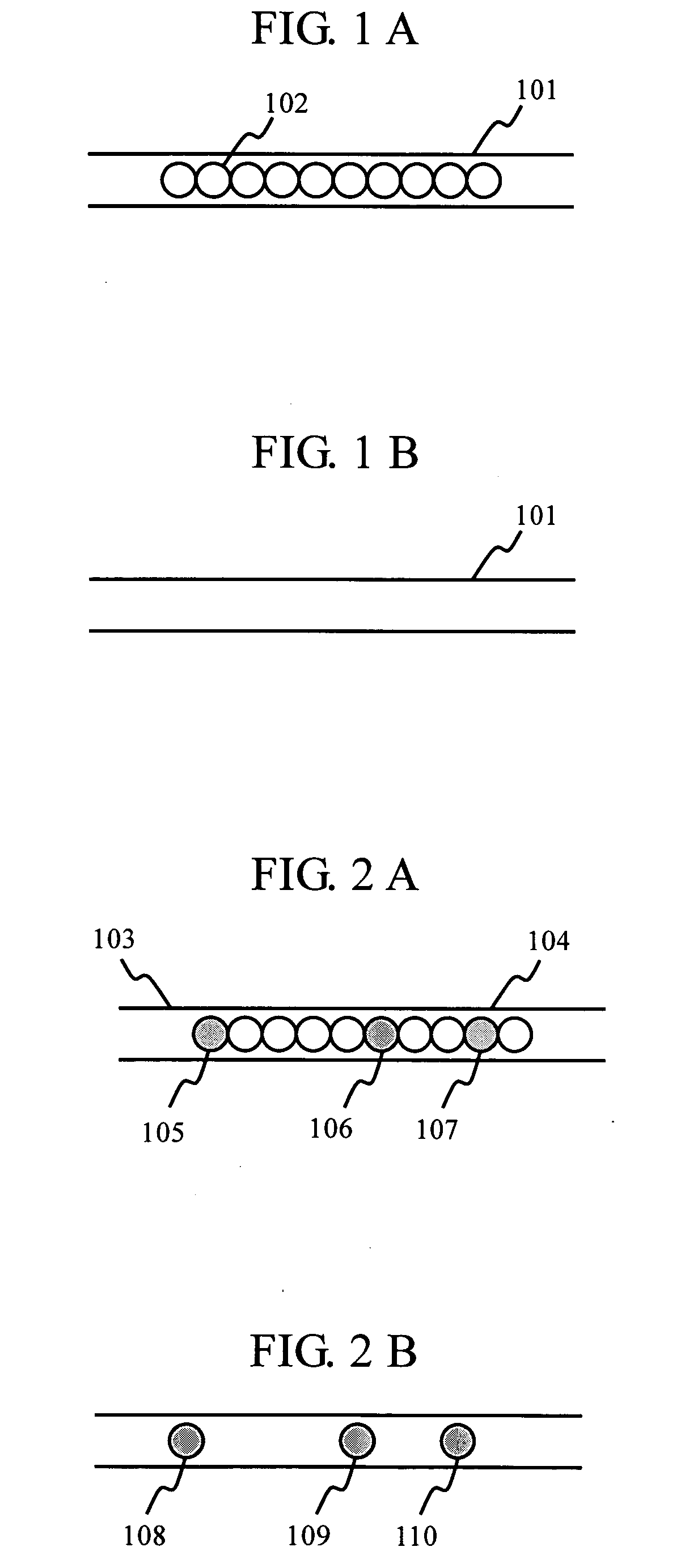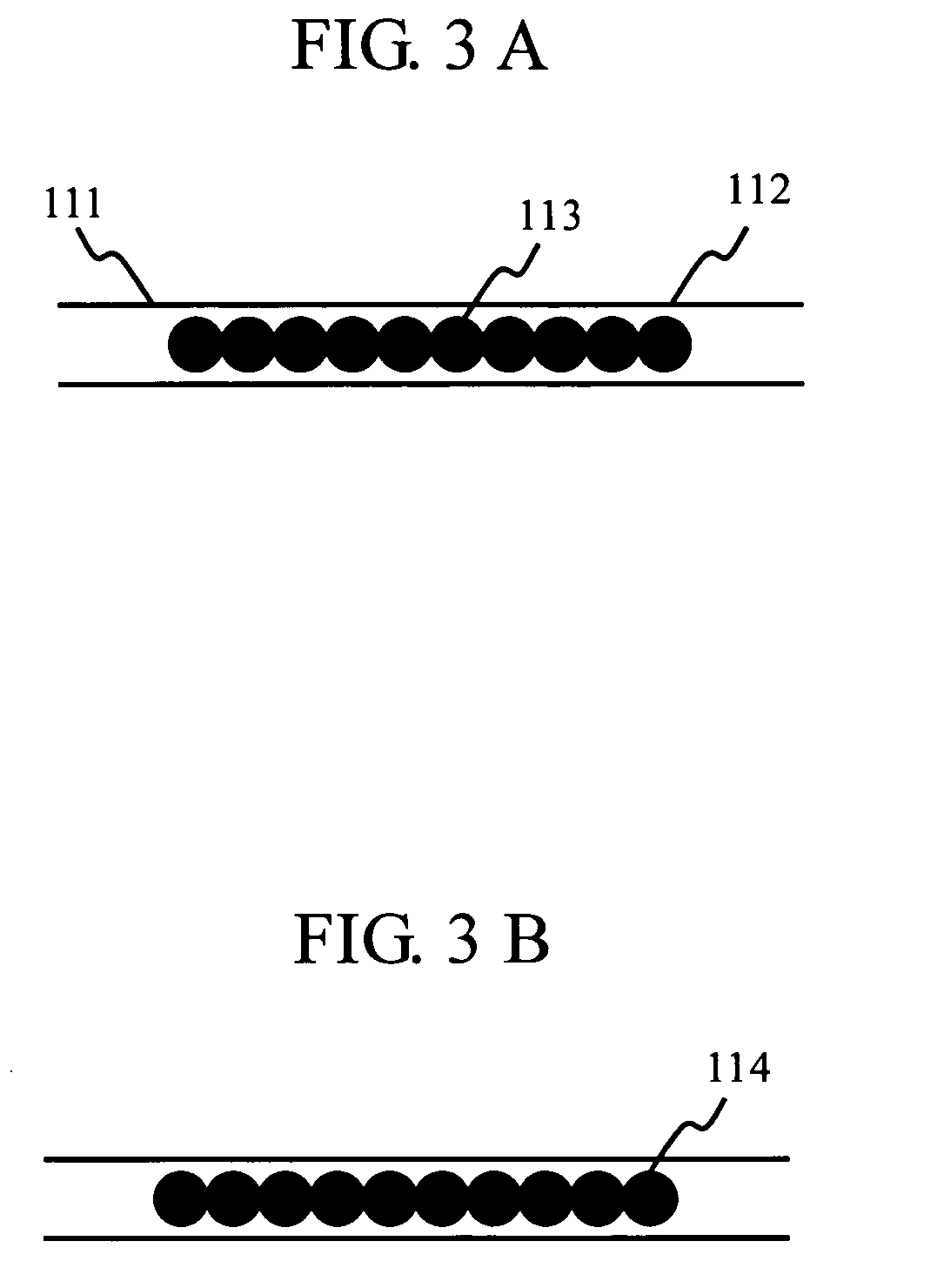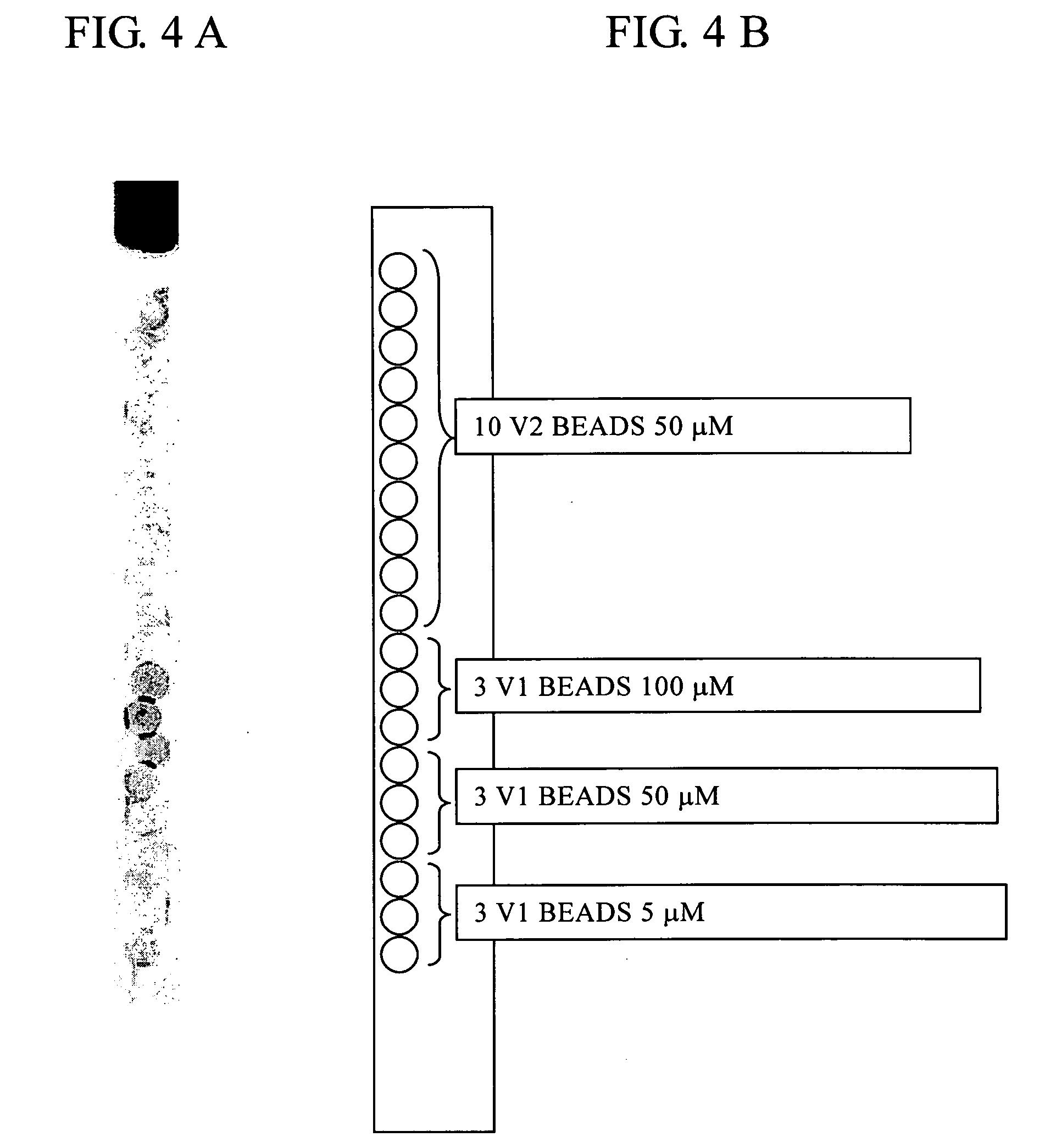Method for detecting location of probe bead in capillary bead array
- Summary
- Abstract
- Description
- Claims
- Application Information
AI Technical Summary
Benefits of technology
Problems solved by technology
Method used
Image
Examples
embodiments
[0036] In the following, the present invention is described with reference to a comparative example and examples.
example 1
[0039] After the reaction with the sample, the beads are stained by causing a solution of nucleic acid binding dye (SYTO61 (SYTO is a trademark of Molecular Probes Inc.)) to flow into the capillary.
[0040]FIG. 5 shows result images (FIGS. 5A and 5B) and a bead arrangement (FIG. 5C). FIG. 5A shows an image of the situation after the reaction experiment with the sample that includes fluorescence-labeled target DNA has ended. Only three beads near the center have reacted. In contrast, FIG. 5B shows an image after the reaction experiment with the sample has ended, and SYTO 61 is further caused to flow and then washed by cleaning fluid finally takes place. From the result of FIG. 5, it is learned that all the beads are stained with SYTO 61 and emit fluorescence. Thus, it is possible to identify the types of reacted beads by comparing the two images of FIGS. 5A and 5B.
example 2
[0041] After the reaction with the sample that includes fluorescence-labeled target DNA, the beads are stained by causing a highly concentrated fluorescent dye solution to flow into the capillary. FIG. 6 shows result images (FIGS. 6A and 6B) and a bead arrangement (FIG. 6C). FIG. 6A shows an image of the situation after the reaction experiment with the sample that includes fluorescence-labeled target DNA has ended. Only one bead near the center has reacted. By contrast, FIG. 6B shows an image of the situation after the reaction experiment with the sample has ended, and the highly concentrated fluorescent dye solution is caused to flow into the capillary. The beads are shown as an outlined image, since the solution emits intense fluorescence when the highly concentrated fluorescent dye solution is caused to flow. From the result of FIG. 6, it is learned that all the beads can be shown as an outlined image. Thus, it is possible to identify the types of reacted beads by comparing FIGS....
PUM
| Property | Measurement | Unit |
|---|---|---|
| Fluorescence | aaaaa | aaaaa |
Abstract
Description
Claims
Application Information
 Login to View More
Login to View More - R&D
- Intellectual Property
- Life Sciences
- Materials
- Tech Scout
- Unparalleled Data Quality
- Higher Quality Content
- 60% Fewer Hallucinations
Browse by: Latest US Patents, China's latest patents, Technical Efficacy Thesaurus, Application Domain, Technology Topic, Popular Technical Reports.
© 2025 PatSnap. All rights reserved.Legal|Privacy policy|Modern Slavery Act Transparency Statement|Sitemap|About US| Contact US: help@patsnap.com



